

Copyright 2013 © Guinea Pigs Australia. All rights reserved


Vitamin A
Vitamin A is fat-soluble, which means the body can store a supply of this vitamin.
Vitamin A is stored via the liver. Vitamin A is obtained via Carotene a vitamin precursor
in vegetables such as carrots, broccoli, spinach and sweet potatoes. These vegetables
also contain Beta-cartotene. Fresh grass and Grass Hays also provide your cavy with
an excellent source of vitamin A and should be a staple in any cavies diet.
12,000ui per kilo of pelleted feed is recommended for cavies. If fed in excess vitamin A
has been known to cause liver damage.
Click here for our Fruits and Vegetables Vitamin A List.
Vitamin C
Vitamin C is a water soluble vitamin. Unlike Vitamin A, K, D and E it cannot be stored
within the body and is excreted through your cavies urine. Guinea pigs require 10-30
mg/kg of vitamin C daily to maintain optimum health and development. Pregnant,
lactating and young cavies require a higher amount of this vitamin. Suggested amounts
include 30-50mg/kg however always check with a qualified exotics veterinarian or
nutritionist before increasing this amount vastly. Capsicum, grass and dark leafy green
vegetables are excellent sources of absorbic Acid.
Click here for our Fruits and Vegetables Vitamin C List.


Vitamin Lists
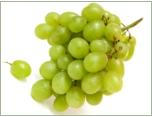
Vitamin A Benefits:
Assists Immune System
Helps Maintain: Teeth
Bone Structure
Skin
Normal Cell Development
Aids in Eyesight - Vision
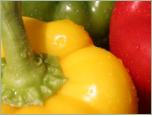
Vitamin C Benefits:
Prevents Scurvy
Aids in normal Cell Function
Absorbs excess Iron
Absorbs excess Calcium
Aids in uptake of Vitamin B
Anti-Inflammatory
Known Antioxidant

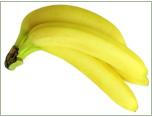
Vitamin B
Vitamin B or Vitamin B complex is made up of a selection of nutrients which work in
synergy to promote and assist in the normalcy of growth and development, enhance
immune and nervous system functions and promote red blood cell growth. In guinea
pigs vitamin B is obtained primarily via hay, grains (in the form of a plain pellet) and
certain fruits and vegetables such as banana and sweet potato.
A guinea pig will re-ingest vitamin B which is converted into “Cecotropes”. These are
soft caecal pellets which are stored in the anus. Consumption of these pellets allows
your guinea pig to effectively obtain extra nutrition and vitamin B which may not have
been digested in the hind gut previously.
Click here for our Fruits and Vegetables Vitamin B List.
Vitamin E
Vitamin E is a fat soluble vitamin and like vitamin A is stored in the liver. Vitamin E has
been referred to in some studies as a potent antioxidant and it may assist in the
reduction of inflammation, promote a healthy immune system, and protect cells within
the body via strengthening capillary walls. Guinea pigs require 50mg per kg feed. Some
excellent sources of vitamin E include mango, alfalfa and capsicum.
Click here for our Fruits and Vegetables Vitamin E List.

Vitamin B Benefits:
Promotes digestive health
Protein Metabolism
Stimulates Appetite
Absorption of Nutrients
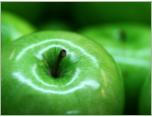
Vitamin E Benefits:
Promotes cardiac health
Protects Blood cells
Supplies Oxygen to blood
Cell Nourishment
Strengthens Capillary walls
Strengthens muscle
Oxalic Acid
Oxalic Acid is a chemical compound primarily found in vegetables such as spinach,
tomato,Swiss chard and parsley. When oxalic acid combines with calcium it forms
Calcium Oxalate, an insoluble salt. If these vegetables are fed in excess high amounts
of Calcium Oxalate can accumulate in the body which may lead to the formation of
kidney stones in cavies.
Always ensure your guinea pigs diet is not too high in oxalic acid content. Knowing
which vegetables and fruits contain high amounts will assist to plan, recognise and offer
a nutritionally effective diet.
Click here for our Fruits and Vegetables Oxalic Acid List.
Fibre
Fibre is critically essential in your guinea pigs diet. Fibre is categorized into two
separate components. Digestible fibre and indigestible fibre. Digestible fibre is broken
down by enzymes and bacteria in the gut and provides energy and essential vitamins
and minerals throughout the body. Indigestible fibre helps aid in proper digestive
activity by keeping food and plant material constantly moving. Without a diet high in
fibre a cavy will suffer from severe digestive upset which can vastly lead to other
illnesses and lower the immune system. It will also slow down the gastrointestinal tract
resulting in changes to the cecum pH.
Cavies require a constant supply of fibre in the form of a good quality grass hay. Always
ensure hay is available to your cavy 24/7. Fresh grass, forages and certain Vegetables
and Fruits are also recommended as an inclusion in your guinea pigs diet to help
promote a high fibre content.
Click here for our Fruits and Vegetables Fibre List.


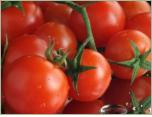
A small tomato can be
offered to your cavy daily.
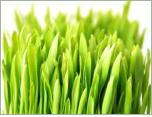
Fibre Benefits:
Promotes correct digestion
Prevents malocclusion
Essential for correct GI
Enables Gut Mobility
Must be available 24/7
Protein
Once consumed protein is broken down via hind gut fermentation which occurs in the
caecum and colon or more commonly referred to as the large intestine. The caecum
contains bacteria and protozoa which are essential for healthy gut mobility and correct
digestion. The Fibre:Protein content in your cavies diet must be correct to ensure the
delicate balance of this bacteria is not compromised due to a diet high in starch, sugars
or excessive protein content.
Once protein has been broken down it is converted into amino acids which are then
used to repair and create body tissue. Excess protein is used as a source of energy.
Always ensure your guinea pig’s fibre content is higher then the protein content. A
good protein level is 15-16% crude protein. Fibre must always exceed 20%. You should
always aim for the highest fibre content possible and avoid high carbohydrate, sugary
foods as they can cause the bacteria within the hind gut to subsequently change. You
do not want this. You want the digestive system working efficiently to avoid
Gastrointestinal ileus (malfunction of the digestive tract due to gut slowdown).
Grass hays contain approx. 19% crude protein and legume hays contain 22% crude
protein.
Click here for our Fruits and Vegetables Protein List.
Calcium
Calcium is responsible for the growth and maintenance of healthy teeth and bones. It is
also a key in maintaining delicate between phosphorus and magnesium. Without the
combination of these vitamins essential nutrients cannot be sufficiently absorbs through
the body.
There needs to be a proper balance between the levels of calcium, phosphorous and
magnesium. If you observe any white substances being excreted out of your cavies
system through its urine you know that there is an excess of calcium in the system and
you must analyze your diet to ensure that you decrease that amount. In most cases
feeding a lower calcium rich hay is sufficient.
Click here for our Fruits and Vegetables Calcium List.

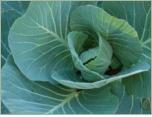

Protein Benefits:
Provides Energy
Creates and repairs Tissue
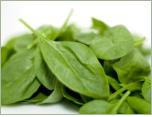
Calcium Benefits:
Promotes healthy bones
Key in vitamin absorbtion
Essential for correct Ca:p
Calcium:Phosphorus
The calcium:phosphorus ratio is extremely important in determining what you feed your
cavy. For every gram of phosphorus ingested in the diet the body must be able to
match the same amount of calcium. This is important for phosphorus absorption which
occurs through the intestinal wall and then into the blood stream. Without the correct
ratio calcium is absorbed from other sources i.e. storage deposits in bones.
A good ratio is 1.5 : 1 Minerals are described as 1:1, 2:1, or 3:1. The numbers are the
ratio of calcium to phosphorus in the product. For example a 2:1 mineral could be 14%
calcium and 7% phosphorus or 20% calcium and 10% phosphorus. In a cavies diet you
need to have a higher calcium to phosphorus ratio. This is why certain foods are not fed
on a regular basis as they have an inverse ratio which can contribute to bladder stone
formation.
Click here for our Fruits and Vegetables Ca:P List
The total Ca:P in various Hay and Lucerne is listed below:
Hay Type
Calcium (%)
Phosphorus (%)
Alfalfa hay, midbloom
1.24
0.22
Oat hay
0.29
0.23
Orchardgrass hay, early bloom
0.24
0.30
Timothy hay, midbloom
0.43
0.20


Ca:P Benefits:
Prevents bladder stones
Absorption of Phosphorus















